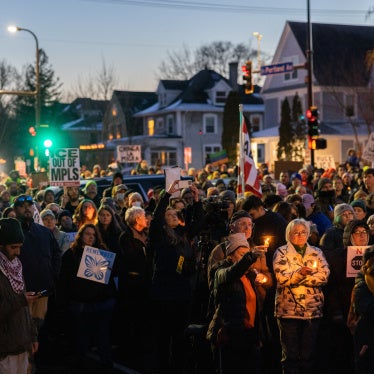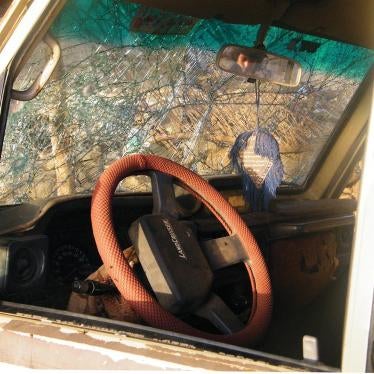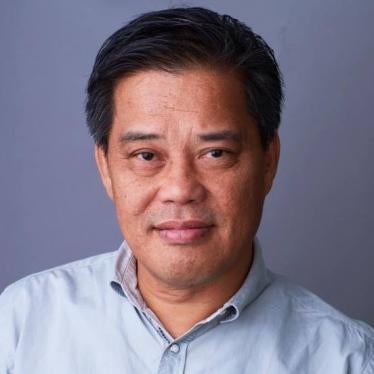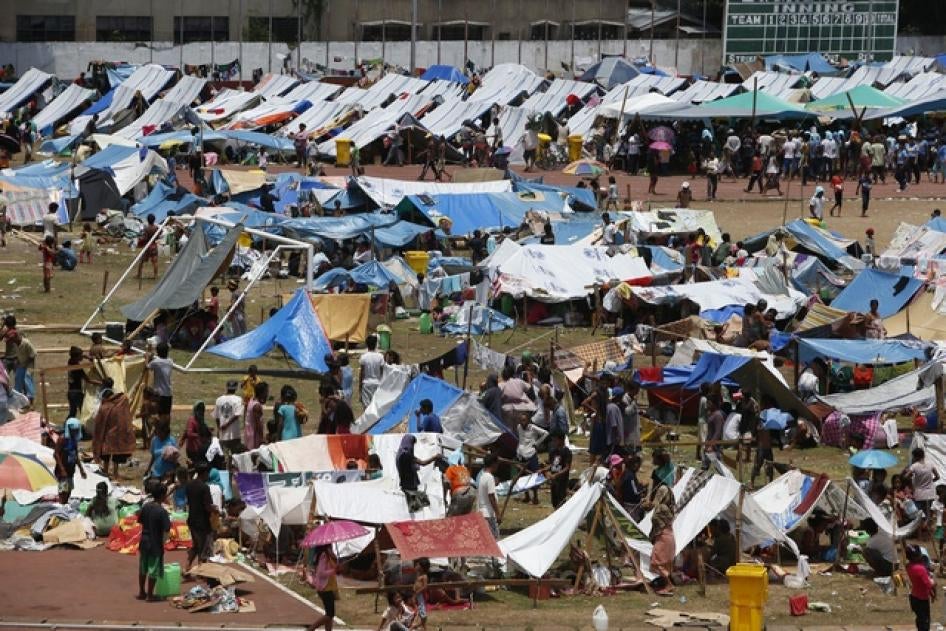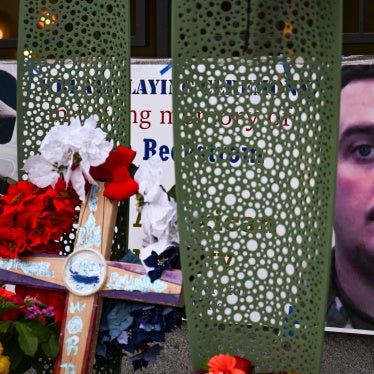The Philippine government loves to put on a pretty face for visiting dignitaries. In May 2012, it rounded up and hid street children and others living along a highway in Manila when the Asian Development Bank’s board of governors met. In January, street dwellers were taken off Manila’s roads and brought to a resort, allegedly so Pope Francis wouldn’t see them.
It appears the government did it again in advance of the recent visit to Zamboanga City and Davao City of Chaloka Beyani, the United Nations special rapporteur on the human rights of internally displaced persons (IDPs).
In September 2013,
fighting in Zamboanga City between rebels and government forces
resulted in abuses by both sides and massive displacement. The government’s response to the needs of the 120,000 internally displaced has largely been inadequate and slow. Many were relocated to sites where
basic services such as water and power are lacking or nonexistent, or far away from their fields or places of work.
As a result, hundreds refused relocation and stayed in the grandstand of the city’s Don Joaquin F. Enriquez Memorial Sports Complex. On July 18, 2015, four days before Beyani’s visit, the government began
removing all of them from the complex, citing a need to repair the facility.
More than 600 kilometers away in Davao City, about 700 displaced members of an indigenous group called Ata Manobos had been living since May inside the compound of a Protestant church. They
said the military’s presence in their rural villages had led to fighting with the communist New People’s Army, forcing them to seek refuge. On July 23, the police and the military tried to
remove them – “
rescue” was how authorities called it – and return them to their villages, but they were met with
resistance and failed.
Beyani expressed
disappointment over the grandstand’s closure “just prior to my visit” – hinting that it may have been a deliberate attempt to whitewash its poor conditions -- and the effect it had of, essentially, displacing again people who were already displaced. The Davao City incident, if it had succeeded, would have achieved the same effect, as some tribal leaders later
alleged.
During his visit, Beyani drew attention to other IDPs in the country, such as in
Tacloban where the needs of many typhoon Haiyan survivors are unmet because of “funding shortfalls and political challenges, including inadequate cooperation between national and local governments.” He underscored the need to address the needs of IDPs in
Maguindanao province, where conflict displaced more than 100,000 people, mainly Muslim, and in
North Cotabato, where
military-supported large-scale mining threatens to displace tribal communities.
As of May, there were more than
260,000 IDPs in the Philippines, the result of conflict and natural disasters. Too often the government talks the talk while neglecting them – or worse. At the very least, local and central authorities should help resolve the plight of the IDPs in Zamboanga City, ideally moving them to properly serviced relocation sites pending their eventual return home. Otherwise, UN officials will conclude that when it comes to IDPs, the government is all talk and no walk.

